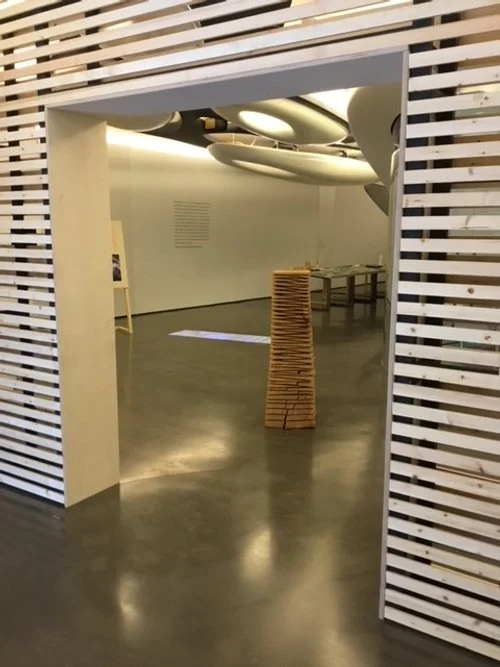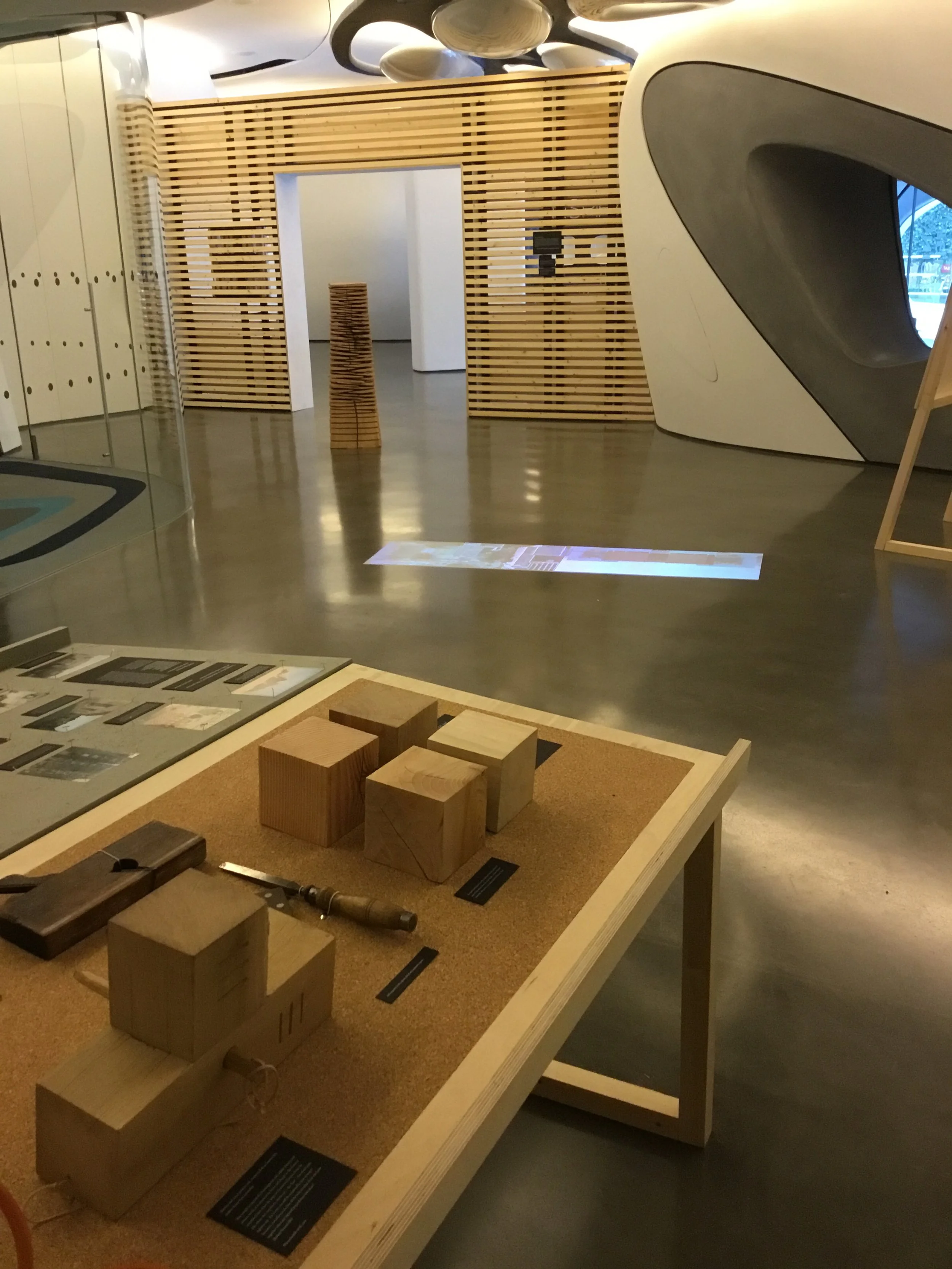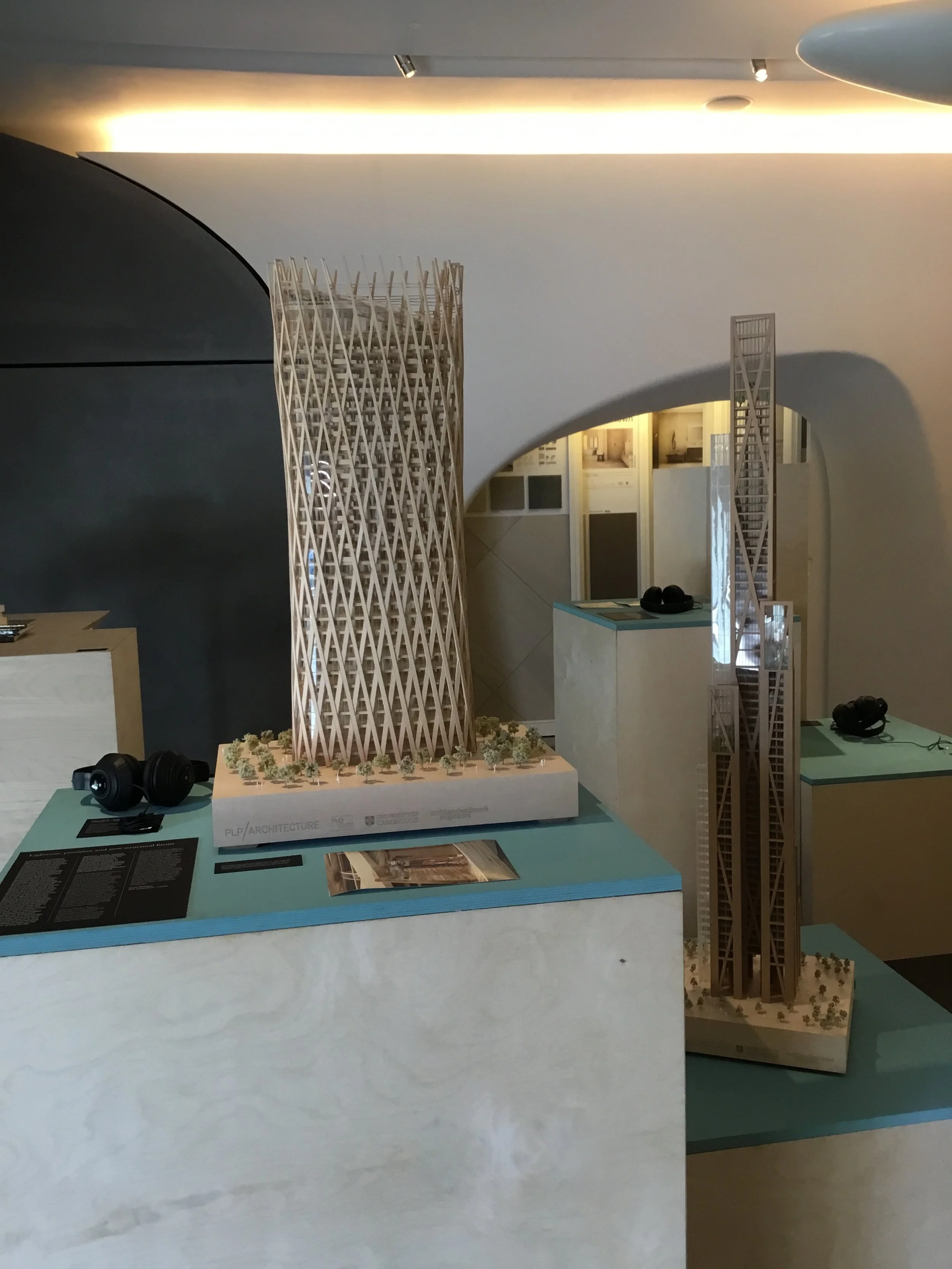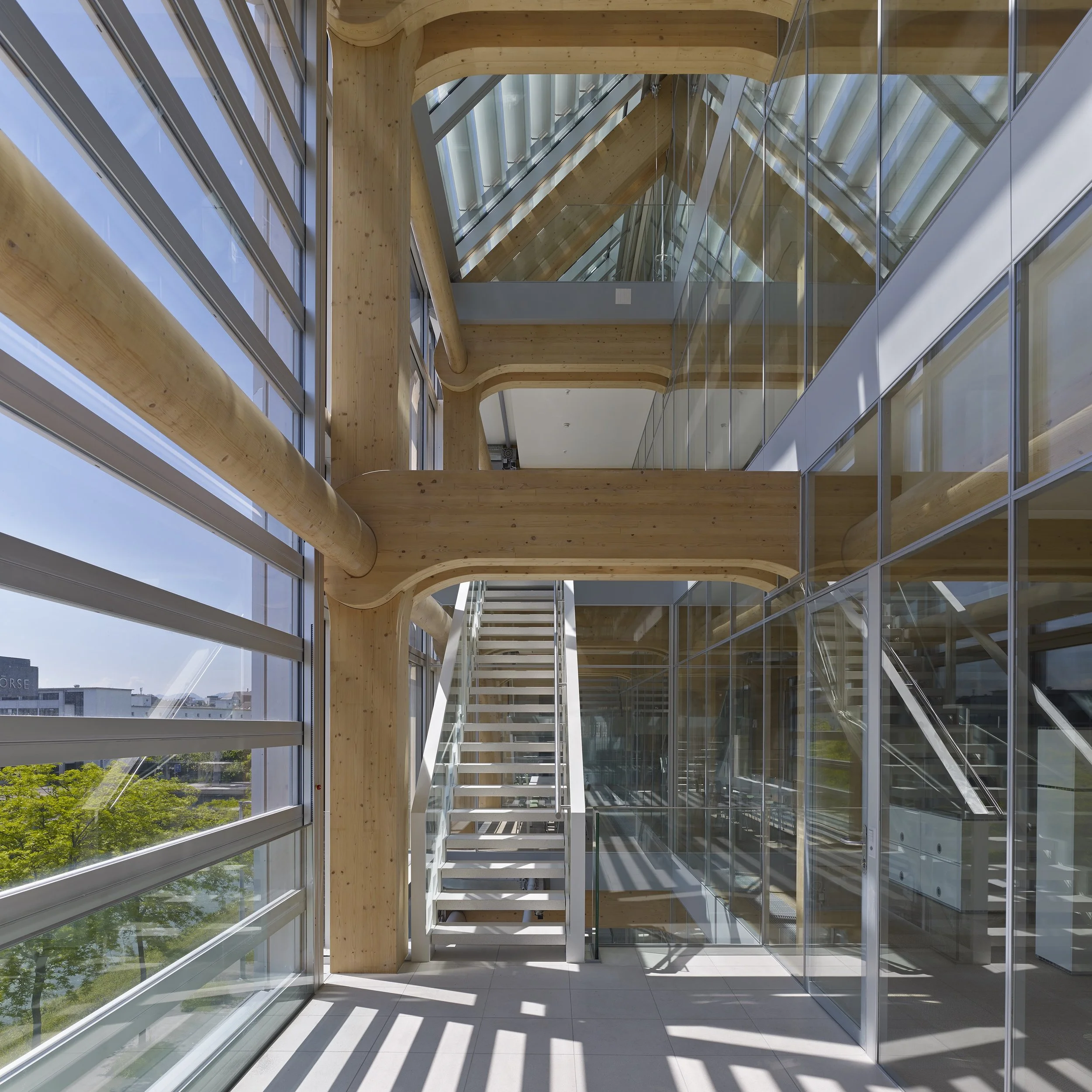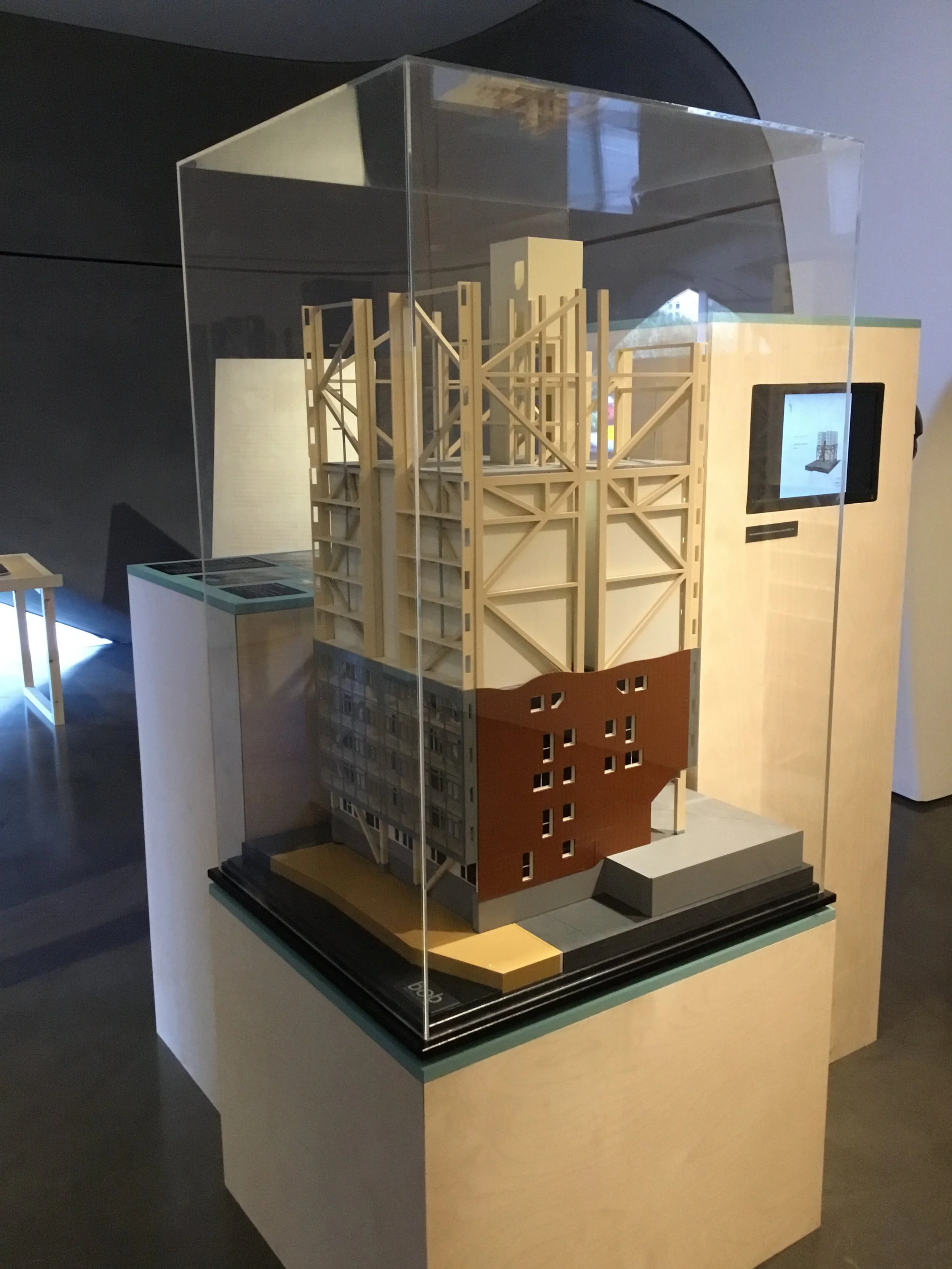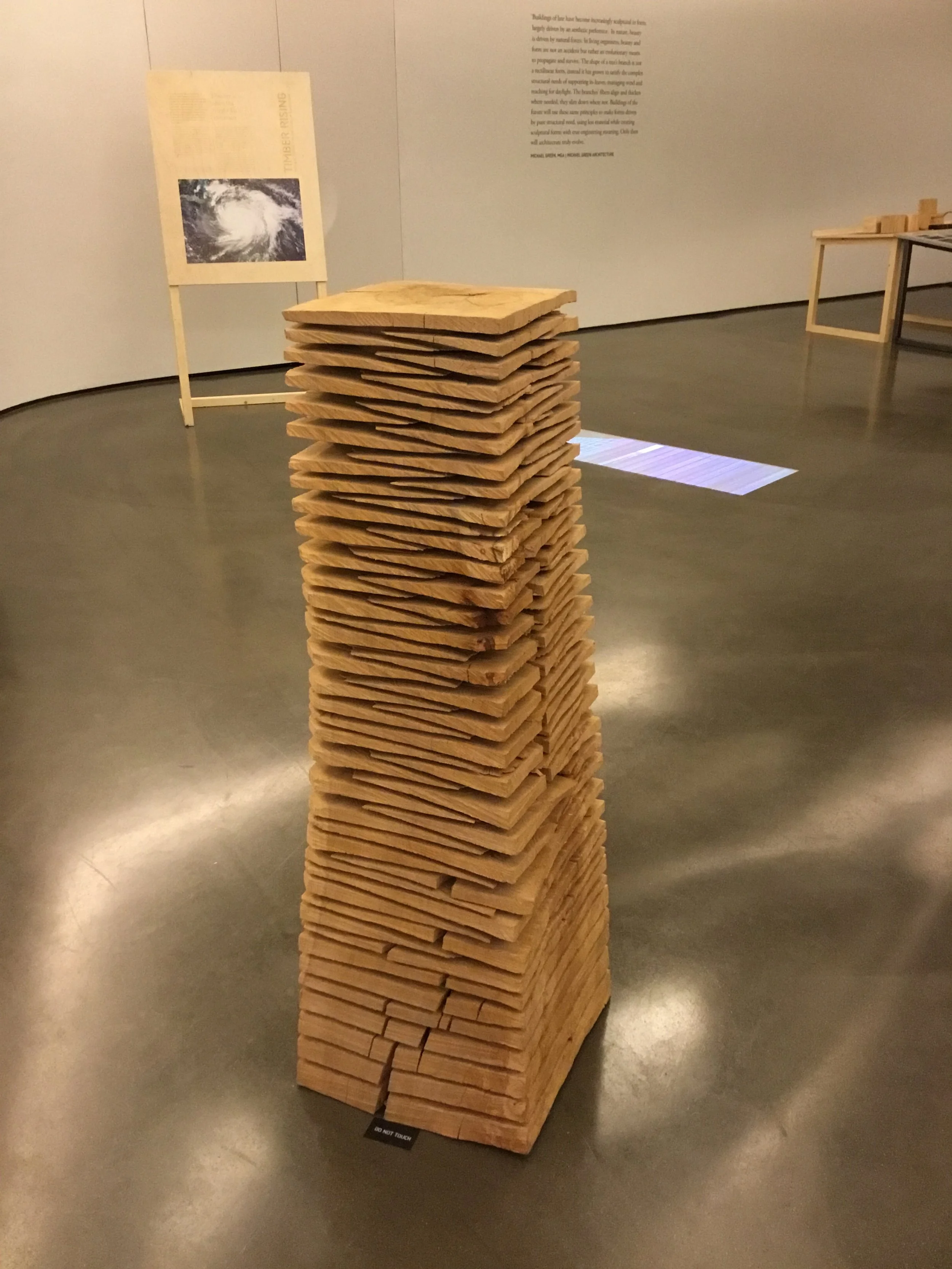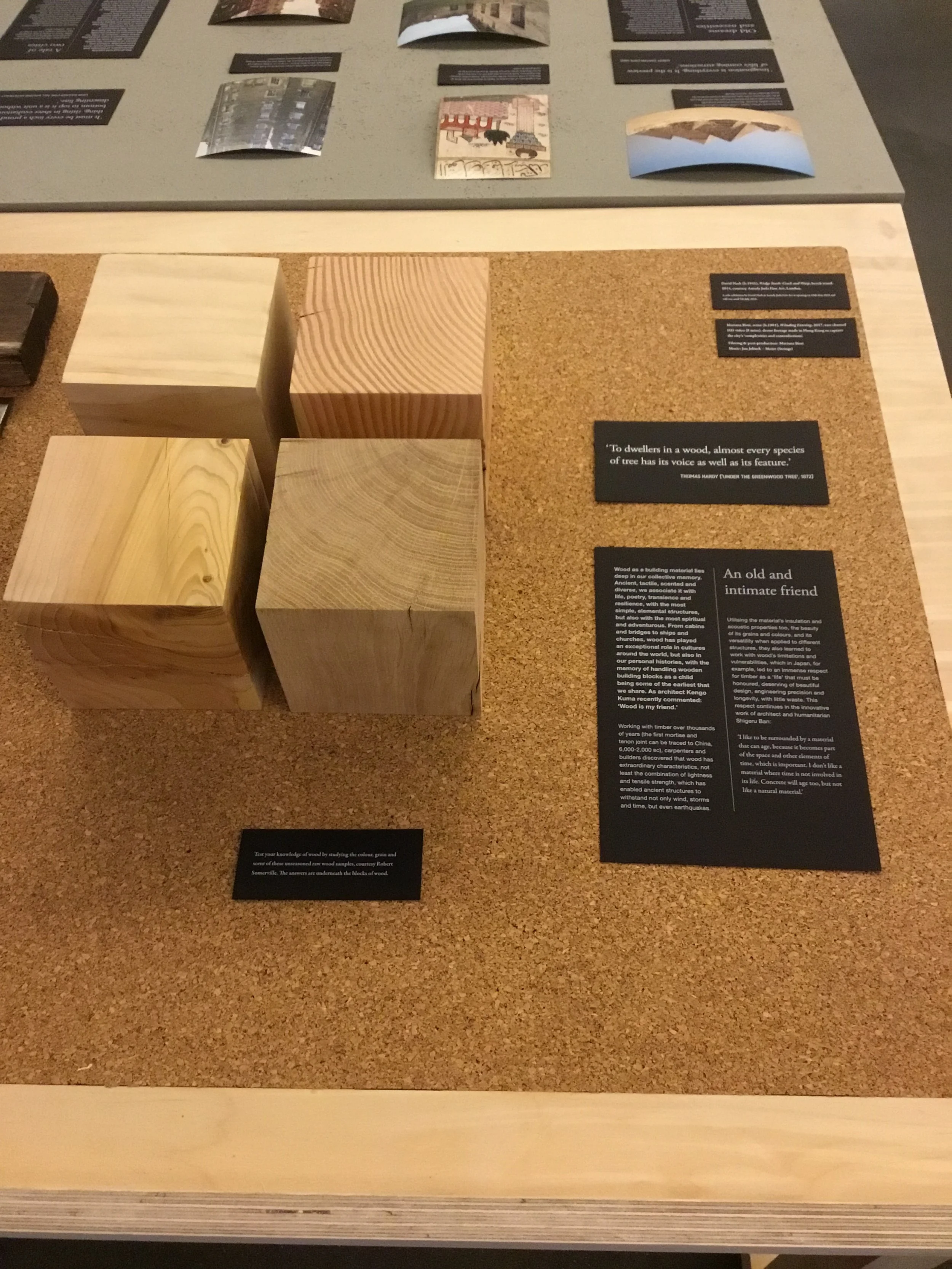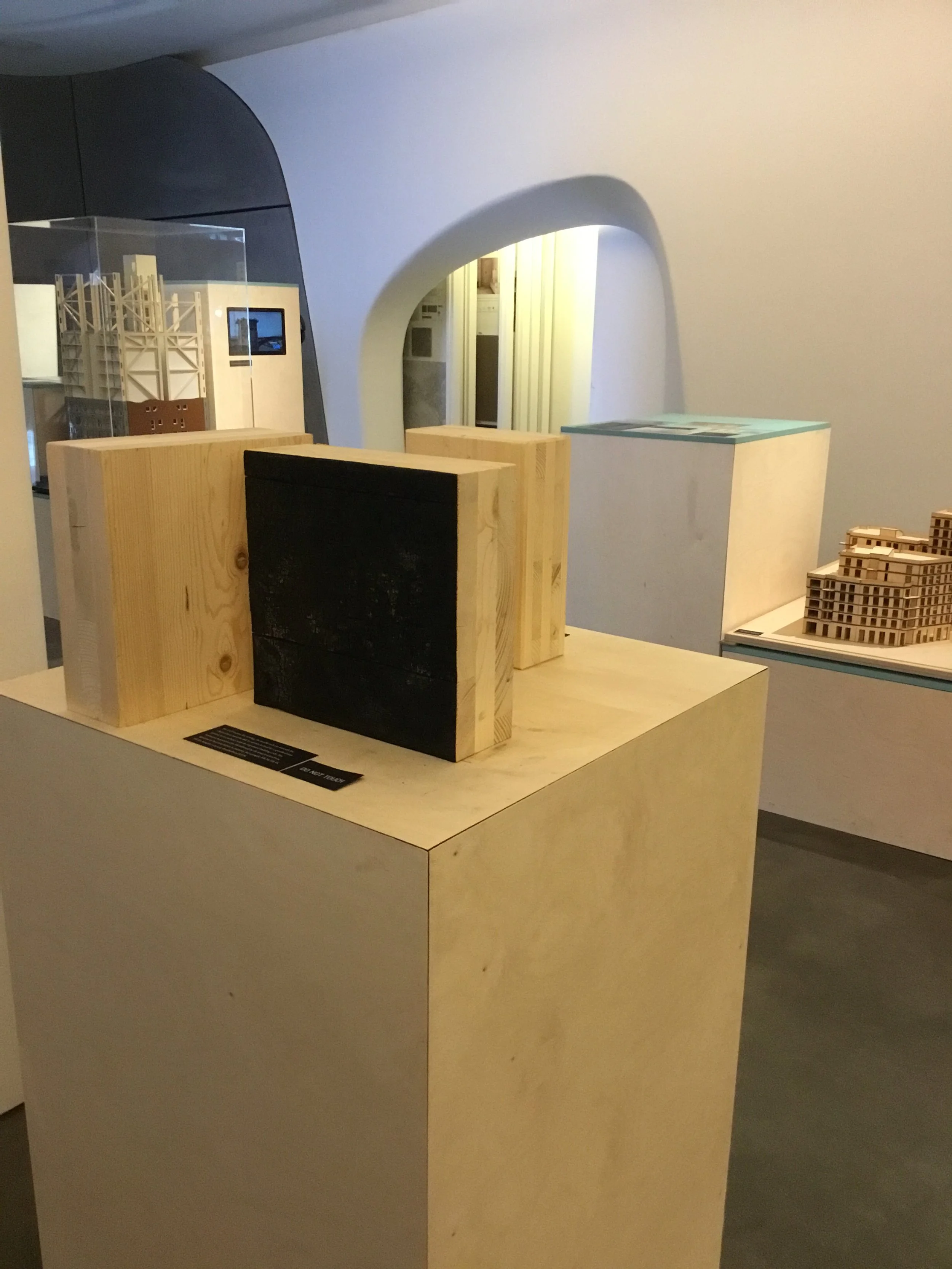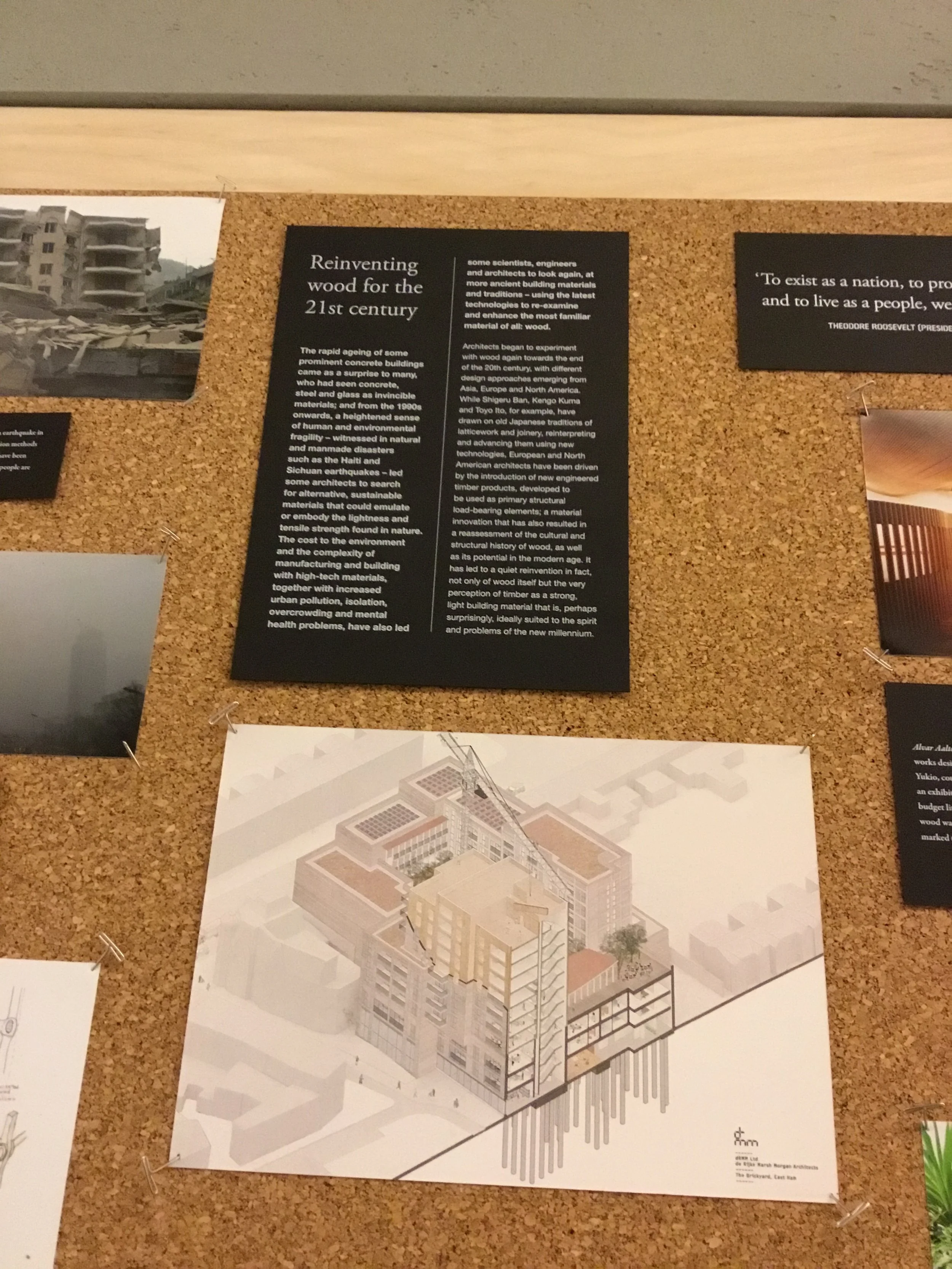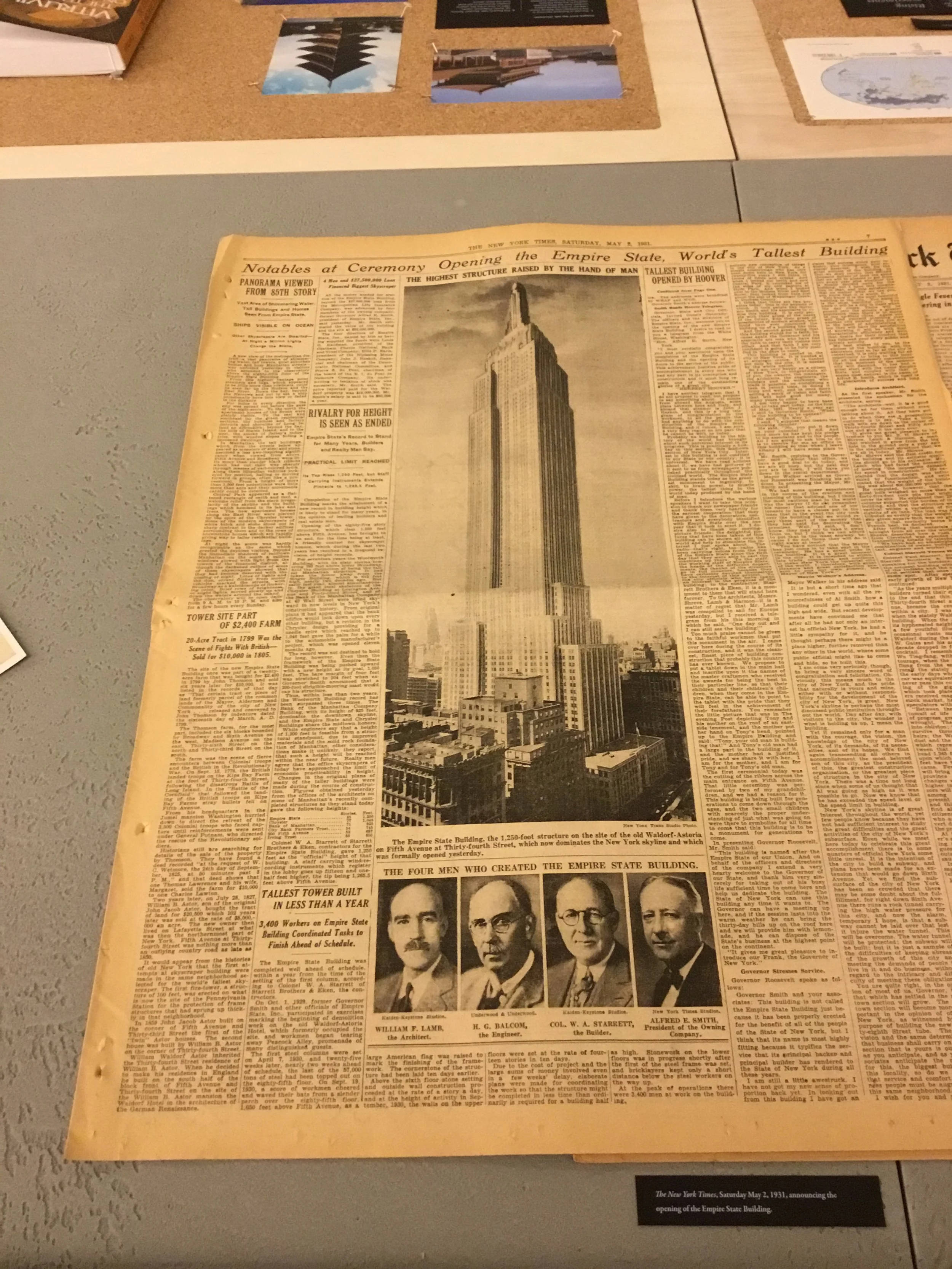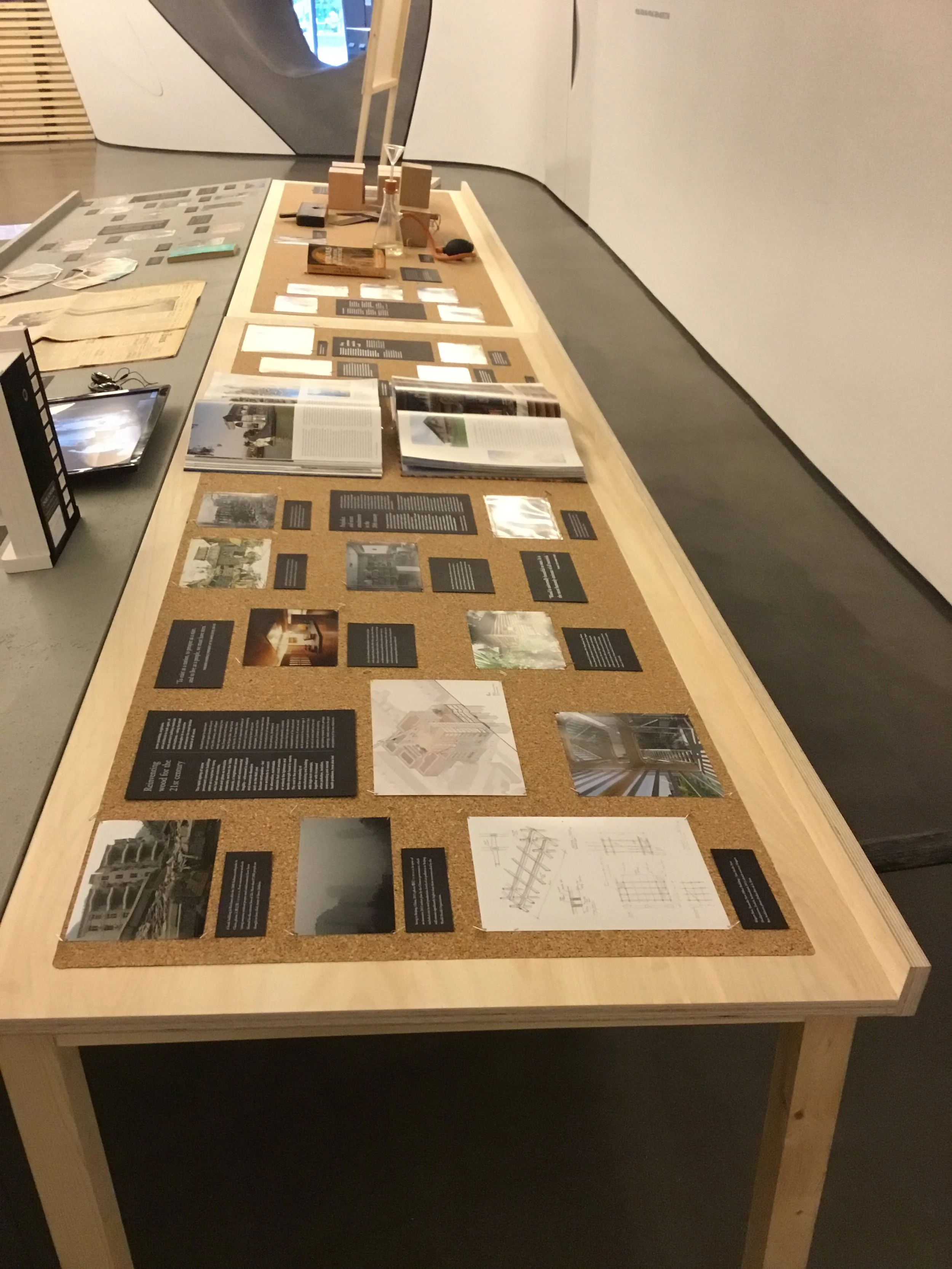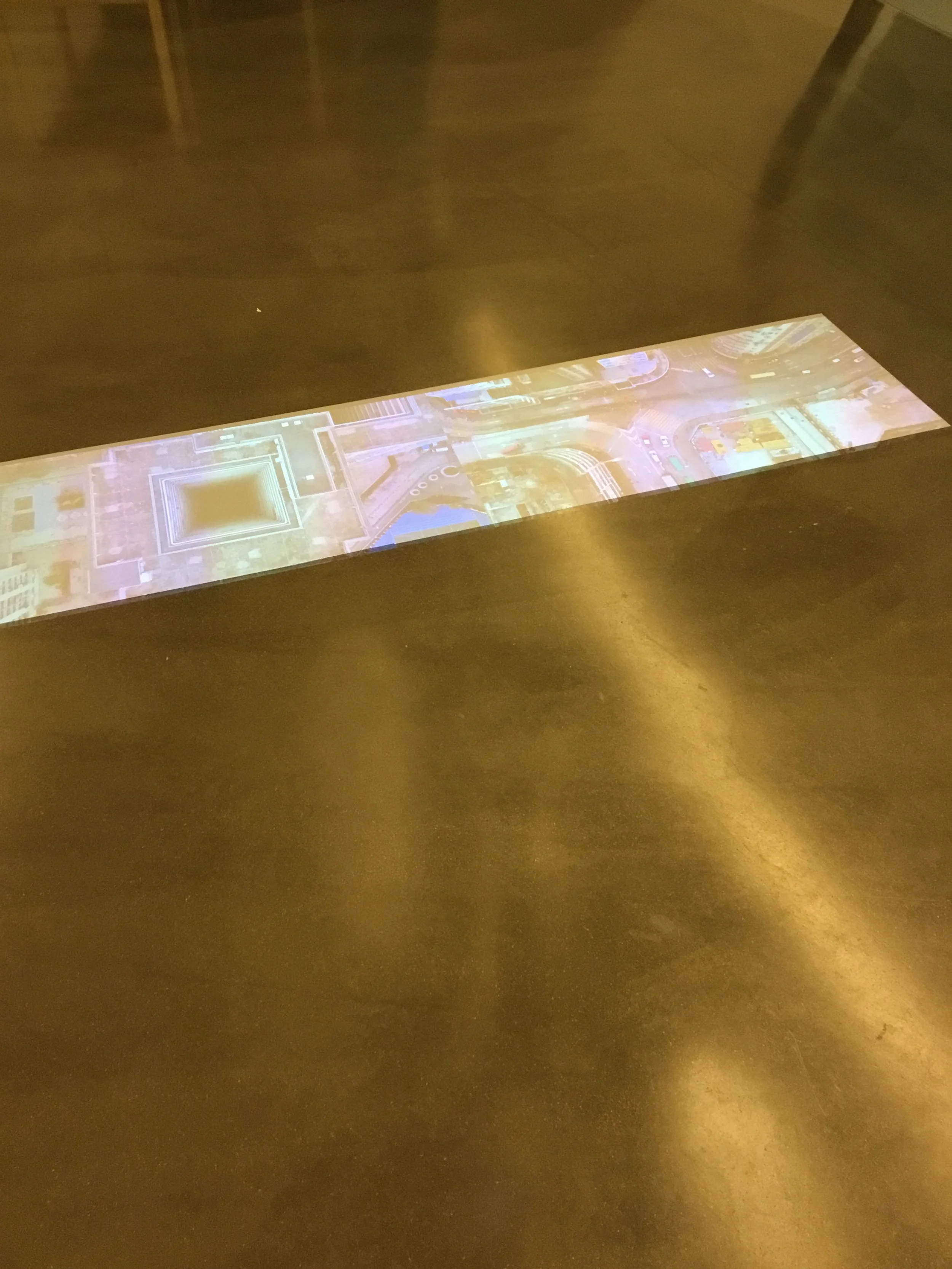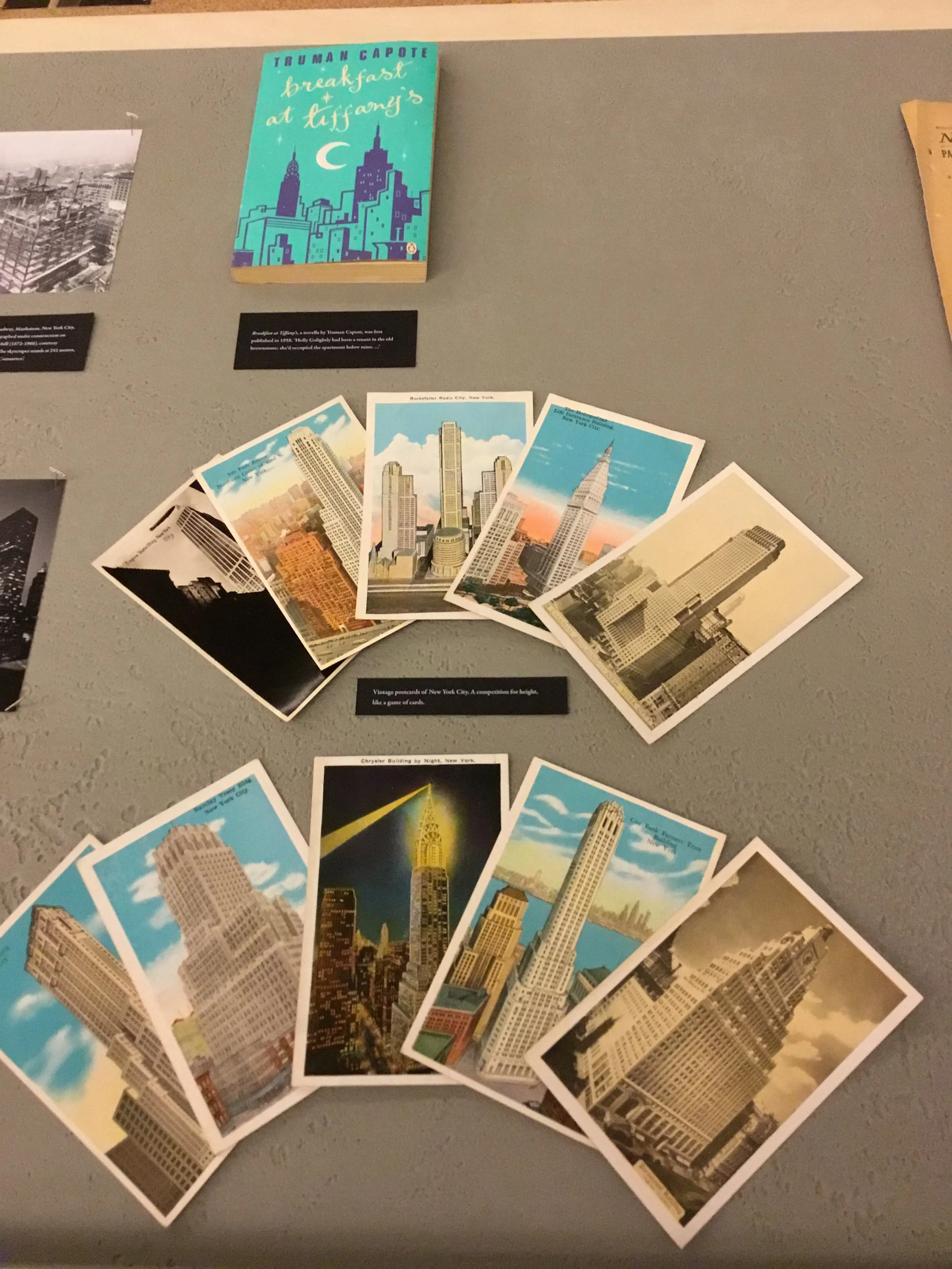“Timber Rising” exhibition photos in Roca London Gallery featuring the work of David Nash, courtesy Annely Juda Gallery; Shigeru Ban, Tamedia Office Building, 2013, Switzerland
Timber Rising
Vertical Visions for the Cities of Tomorrow
Co-curated with Studio Woode for Roca London Gallery in 2018 (9 Feb. - 19th May), and travelling to Roca Barcelona Gallery in 2019, with additional content and scenography, “Timber Rising” addresses contemporary experiments in tall timber, made possible by the invention of engineered timbers such as CLT (cross-laminated timber) in the 1990s. A response to the climate crisis.
The exhibition, designed by CellarDoor, has played an important role in disseminating the argument for timber buildings as a sustainable vision of the future, in spite of the prejudice and misguided theories about wood, particularly in the UK. While it is a combustible organic material, the crucial point is that it is a predictable one, with extraordinary structural and health potential (for people and the environment), and a building process that can be fast, light, quiet, and non-toxic. What is needed is persuasion.
Conceived as an exhibition by Eva Woode, with titles devised by Clare Farrow (the subtitle is inspired by Le Corbusier’s book, “The City of Tomorrow and its Planning”, 1929), the technical research, writing and material studies are by Eva Woode and Lizzie Toole, while the exhibition also features original research by Clare Farrow, who conducted interviews with 3 leading practices that advocate tall timber in the city - Michael Green Architects, Waugh Thistleton and PLP Architecture.
Clare also researched and created multi-sensory displays to narrate ‘The Story of Wood’ and ‘The Story of Building Tall’. In the London version, the exhibition includes a sculpture by artist David Nash, from Annely Juda Gallery, and in Barcelona two wood artworks, including a kinetic piece by artisan sculptor Antoní Yranzo. Both artists were chosen and invited by Clare Farrow. A further projected artwork by Mariana Bisti shows the urban density of Hong Kong, filmed with drones to convey the height of the city’s soaring skyscrapers and its labyrinthine complexity.
One of the main arguments - which still needs further scientific studies and financial support from governments - that begins to prove the revolutionary potential of engineered timber in urban design, is that timber buildings and interiors enhance health, healing and wellbeing; and the exhibition, with its accompanying newspaper publication, describes these studies.
Models and images of tall timber structures (built and unbuilt) in the show that illustrate this potential include “Treet (The Tree)” in Bergen, Norway, by Artec AS; Kulturhus Skellftea in Sweden, by White Arkitekter; Oakwood Timber Tower 1, proposed for The Barbican by PLP Architecture; Dalston Lane in Hackney, London, by Waugh Thistleton; and “Baobab” in Paris by Michael Green.
Clare Farrow’s opinion piece for Dezeen, “If urban densification is inevitable, then let it be done with a material that makes us happy”, was published to coincide with the show in London.
Shigeru Ban’s exceptional work with wood, exemplified in his Tamedia Building in Switzerland, in which the joinery (without nails) is exposed in the visible framework and structure of this beautiful building, features in ‘The Story of Wood’, and the architect gave a lecture about his work to coincide with the exhibition’s reiteration in Barcelona, introduced by Clare Farrow.
